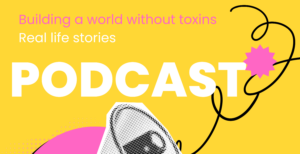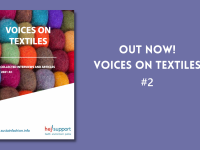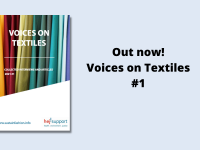The ‘World’s Dirtiest Crop’: Pesticide Use in Cotton Production

Cotton is ubiquitous and widely used throughout the world in the textile and garment industry. However, cotton production can lead to adverse impacts on both human health and the environment due in large part to pesticide use during production. As reported by the Environmental Justice Foundation, cotton is responsible for 6% of global pesticide use and 16% of insecticide use, despite occupying only 2.4% of cultivated land.1 Widespread pesticide use is a highly important concern in particular to its direct impact on human health; the research findings cited in 2017 by the Special Rapporteurs for the United Nations estimates that approximately 200,000 annual acute poisoning deaths are attributable to pesticides.2
Long-term pesticide exposure has been linked to a variety of health concerns, such as hormonal disruption, developmental disorders, fertility issues, and Alzheimer’s disease.2
In addition to adverse health effects of farmers, pesticide use in cotton farming is also a health concern for the general population since a significant portion of cotton derivatives end up in the food chain, according to the Rodale Institute.3 This can occur directly through food products such as cottonseed oil or indirectly through animal products due to the use of cotton byproducts, such as cottonseed meal and hulls, used in animal feed supplements as well as primary feed sources.3
Although genetically-modified Bacillus thuringiensis (Bt) cotton has been lauded as a solution to the overuse of pesticides, farmers now spend even more on pesticides than they had previously due to the increasing populations of non-target pests, as suggested by an article published in Nature.4 Some species of bollworm are developing resistance to particular strains of Bt cotton, which is contributing to the increase in pesticide use.5
A study of adaptive practices in pesticide use among Zimbabwean smallholder cotton farmers found that many farmers increased pesticide spraying frequencies in response to perceived climate change impacts such as shorter growing seasons.6
In addition to human health concerns, heavy pesticide use can lead to a myriad of environmental issues including biodiversity loss, soil degradation and water contamination.7
To address these issues, a transition to organic and sustainable cotton farming is necessary to lessen the chemical exposure from hazardous pesticides.8
For more information about pesticides and cotton, please refer to the report published by the Pesticide Action Network (PAN) UK in 2018: Is cotton conquering its chemical addiction? A review of pesticide use in global cotton production.
References
- Environmental Justice Foundation. (2017). The Casualties of Cotton. Retrieved from: https://ejfoundation.org/news-media/the-casualties-of-cotton
- UN News. (2017, March 7). UN human rights experts call for global treaty to regulate dangerous pesticides. Retrieved from: https://news.un.org/en/story/2017/03/552872-un-human-rights-experts-call-global-treaty-regulate-dangerous-pesticides
- Meyer, M.L. (2014, February 4). 9 ways you may not realize cotton is in your food. Rodale Institute. Retrieved from: https://rodaleinstitute.org/blog/9-ways-you-may-not-realize-cotton-is-in-your-food/
- Kranthi, K.R., & Stone, G.D. (2020). Long-term impacts of Bt cotton in India. Nature Plants, 6, 188-196. Retrieved from: https://www.nature.com/articles/s41477-020-0615-5
- Ferrigno, S., Guadgnini, R., & Tyrell, K. (2018, June). Is cotton conquering its chemical addiction? A review of pesticide use in global cotton production. Pesticide Action Network UK. Retrieved from: https://issuu.com/pan-uk/docs/cottons_chemical_addiction_-_update?e=28041656/62705601
- Zinyemba, C., Archer, E., & Rother, H-A. (2020). Climate change, pesticides and health: Considering the risks and opportunities of adaptation for Zimbabwean smallholder cotton growers. International Journal of Environmental Research and Public Health. Retrieved from: https://www.researchgate.net/publication/347945981_Climate_Change_Pesticides_and_Health_Considering_the_Risks_and_Opportunities_of_Adaptation_for_Zimbabwean_Smallholder_Cotton_Growers
- World Wildlife Fund. (n.d.) Sustainable Agriculture – Cotton. Retrieved from: https://www.worldwildlife.org/industries/cotton#:~:text=20%2C000%20liters,food%20crop%20in%20the%20world.
- Textile Exchange (2020). 2025 Sustainable Cotton Challenge: Second Annual Report 2020. Retrieved from: https://textileexchange.org/wp-content/uploads/2020/06/2025_Sustainable-Cotton-Challenge-Report_20201.pdf






